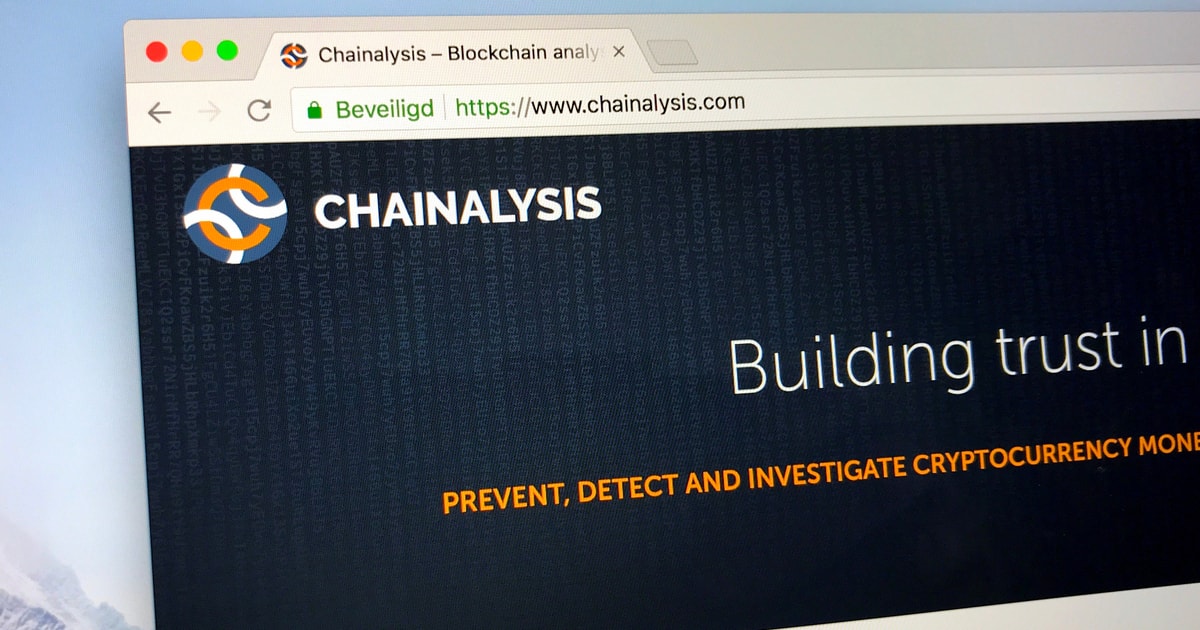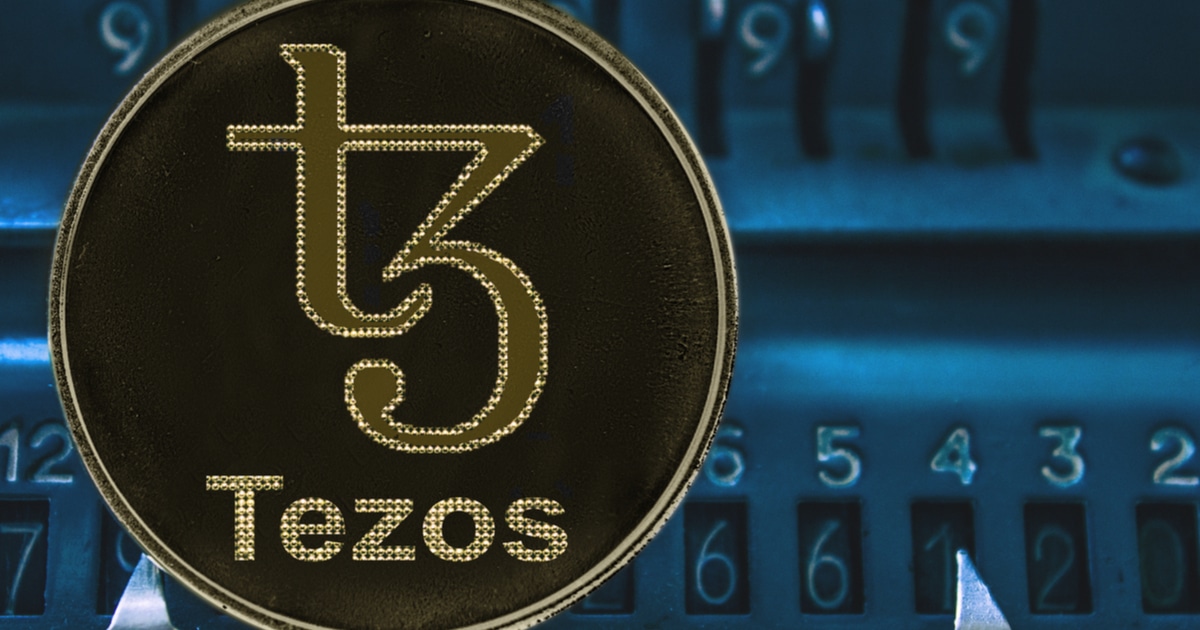Cory Klippsten is a big fan of Bitcoin. But his affinity for cryptocurrencies ends there. Klippsten, head of a company called Swan Bitcoin, sees a growing minefield of scams, fraud, and risky products throughout the industry. As the market retreats, he sounds embarrassed to be associated with it.
“I’m a Bitcoiner who believes Bitcoin is transforming the world,” says Klippsten, 44. “I’m so sick of having my name and business associated with the crypto industry. It’s exhausting.”
There’s no small irony in a Bitcoin purist taking shots at the rest of crypto. Bitcoin is no paragon of virtue; mining the stuff is energy-intensive and environmentally costly. And it’s failing miserably as a store of value or an inflation hedge—two heavily promoted uses. Down 70% in seven months with $900 billion in lost market value, the king of crypto looks more naked than ever.
But Bitcoin isn’t crypto’s biggest problem these days. It’s the token’s progeny and the industry’s freewheeling financial practices. Rather than revolutionizing Wall Street, the crypto industry has adopted many of its products and reinvented them, largely with rules of its own making. Now, thanks to a cocktail of unbridled leverage, automated liquidations, and collapsing prices, it’s also reinventing a financial crisis.
“The industry and these companies are shrouded in mystery. In that situation, history tells us that there will be all sorts of risky behavior, fraud, and deceit,” says John Reed Stark, a former chief of the Securities and Exchange Commission’s Office of Internet Enforcement. “It’s not the Wild West. It’s a Walking Dead-like anarchy with no law and order.”
Beyond Bitcoin are legions of other tokens, trading platforms, and quasi-banks offering stupendously high yields on deposits. This parallel world of shadow banking and trading is straining to stay above water amid a series of crises, including the failure of a major “stablecoin,” a hedge fund collapse, and a liquidity crunch at some large crypto lenders.
A tougher macro climate has put the industry on its heels. Rising interest rates and tighter financial conditions have triggered a stampede out of anything related to crypto, amid a broader selloff in tech overall.
But the industry has hardly steeled itself to pass a market stress test. Crypto start-ups and exchanges expanded in a regulatory vacuum, establishing their own governance rules or dispersing them through open-source software “protocols.” Crypto advocates have long pitched these homegrown practices as an improvement over Wall Street—breaking finance from the shackles of banks and brokerages. But in some ways, the industry adapted a Wall Street playbook to a new technology. And its supervision has been almost entirely by those with a financial interest in the outcome.
“It’s not the Wild West. It’s a Walking Dead-like anarchy with no law and order.”
Two of the biggest worries now are a crypto bank and a hedge fund. Celsius Network, a major crypto lender that had taken in $11 billion of deposits, has frozen withdrawals as it tries to prevent a run on the bank that would likely put it out of business. On June 30, Celsius said it’s taking steps to preserve assets and is exploring options that “include pursuing strategic transactions as well as a restructuring of our liabilities, among other avenues.” Celsius did not respond to requests for comment.
Hedge fund Three Arrows Capital, known as 3AC, meanwhile, has been ordered to liquidate by a court in the British Virgin Islands after being sued by creditors. The fund had borrowed heavily to build a portfolio that it said was worth $18 billion. And it had built a large position in Grayscale Bitcoin Trust (ticker: GBTC), a closed-end trust that trades publicly and was a popular vehicle for crypto arbitrage.
For years, GBTC traded at a significant premium to its underlying Bitcoin holdings—sporting a value 35% higher than its tokens holdings at one point in 2020. That meant hedge funds could make easy money by borrowing Bitcoin, giving them to the trust in exchange for shares, and then selling the shares for a profit once a waiting period expired.
But in 2021, that premium flipped to a discount, and it has widened as the price of Bitcoin declined—GBTC recently traded at a discount of 29% to its net asset value. That trapped investors like 3AC, listed as one of the trust’s largest owners in June.
Yet even as the discount widened, 3AC kept buying, in a “classic case of a bettor at the table that keeps losing and doubling down,” said Sean Farrell, head of digital asset strategy at Fundstrat Global Advisors. Ultimately, “3AC could no longer hold its daisy chain of leverage together, causing illiquidity issues across the crypto lending space,” said Farrell, who compares 3AC to Long-Term Capital Management, a massively leveraged hedge fund that required a government-arranged bailout in 1998.
3AC didn’t respond to a request for comment. Grayscale CEO Michael Sonnenshein says the trust’s main holders are long-term investors.

Cory Klippsten is the head of a company called Swan Bitcoin.
Photograph by Patrick StrattnerLenders and brokers with exposure to 3AC included Voyager Digital (VOYG.Canada), which said in a news release that 3AC defaulted on a $675 million loan consisting of Bitcoin and USDC, a stablecoin pegged to the dollar. Voyager has since curtailed withdrawals from its platform. The company had no comment.
Without government backstops, crypto’s white knights have been other crypto people. The billionaire founder of the exchange FTX US, Sam Bankman-Fried, agreed to extend a $400 million revolving line of credit to BlockFi, with an option to buy the company. BlockFi suffered around $80 million in losses due to exposure to 3AC. Bankman-Fried, through his trading firm, Alameda Research, has also bailed out Voyager with lines of credit worth around $500 million.
“We spent decades evolving rules that were designed to prevent abuses on Wall Street,” says Eric Kaplan, senior advisor to the center for financial markets at the Milken Institute. “Some in the crypto markets are turning their backs on that.”
How much longer that free-for-all lasts is the subject of much debate in Washington. The Biden administration, Congress, and agencies like the SEC are working on rules. Yet regulators and lawmakers are at odds over whether to apply established rules to crypto or to write new ones.
Regulators see systemic risks if crypto isn’t reined in. The European Central Bank recently warned that the crypto market was similar in size to securitized subprime mortgages before the 2008 financial crisis. Crypto assets “will pose a risk to financial stability,” the ECB said in a report, if they keep growing and banks increasingly get involved.
“The market at this point isn’t big enough to trigger a systemic risk event, but these are not static markets. They are continuously evolving and growing,” says Lee Reiners, who heads the Global Financial Markets Center at Duke University. “It’s time to sound the alarm bells.”
Wall Street
Meets Crypto
For much of the past decade, crypto evolved in a regulatory gray zone. Products and marketing that would never be allowed on today’s Wall Street—thanks to a century of financial regulations—found homes in crypto. The industry is now packed with Wall Street alumni, traders, and others from the financial industry.
The heads of major companies such as Galaxy Digital Holdings (GLXY.Canada), Grayscale Investments, and Genesis Trading all worked on Wall Street before coming to crypto. At Coinbase Global (COIN), the head of global financial operations came from Goldman Sachs. Celsius was founded by Alex Mashinsky, a serial tech entrepreneur, but its senior team includes alumni of Royal Bank of Canada, Citigroup, and Morgan Stanley.
One of the largest equity market makers, Jane Street Capital, is part of the crypto plumbing, providing liquidity to exchanges like Robinhood Markets (HOOD) and trading crypto for itself. “What’s going on in crypto is a pretty wonderful sandbox for a lot of different experiments,” said Thomas Uhm, a member of Jane Street’s crypto sales and trading team, on a podcast in February.

Without a regulator like the SEC in charge, crypto companies set many of their own rules. Industrywide listing requirements for tokens don’t exist. Binance.US lists more than 100 tokens, from ApeCoin to Zilliqa. Coinbase offers around 170 tokens, including some issued by entities that the company’s own venture-capital arm has funded. Coinbase says its token investments don’t influence listings.
Crypto traders aren’t just going up against sophisticated investors like hedge funds or high-frequency trading firms. They may be trading against companies that act as their broker, custodian, market maker, and exchange—all rolled into one entity.
Market makers, stock exchanges, and brokerages have long been separated on Wall Street due to conflicts of interest that would arise if they handled it all—such as making it possible to trade against their own customers or front-run orders. In crypto, that separation often doesn’t exist, leaving investors vulnerable, according to regulators such as SEC Chairman Gary Gensler.
“There’s no prohibition against wash-trading on crypto exchanges, no prohibition against proprietary trading, no best-execution rules, and no standardized reporting,” says Timothy Massad, a former chairman of the Commodity Futures Trading Commission. “It’s this whole lack of a framework where you can’t compare it to securities that concerns me.”
Crypto trading platforms say some of the concerns are overblown or stem from a lack of clarity around the rules. A Coinbase representative said the company doesn’t trade against customers or act as a market maker. “We will continue to call for a regulatory framework for the crypto-economy that ensures consumer protections and expands access for all,” the representative said in a statement.
“Many exchanges serve multiple functions out of necessity as the industry is still in its infancy,” Binance said in a statement to Barron’s. “As a leading exchange, Binance takes user protection and responsible trading seriously.” FTX declined to comment.
Yet centralized exchanges account for only some of the trading. Billions of dollars worth of crypto also sits on decentralized finance, or DeFi, platforms. Traders, borrowers, and lenders set their own terms in DeFi, matched by algorithms or software protocols that automate all aspects of a transaction. Positions may be automatically liquidated if collateral levels fall below preset thresholds.
Investors often plow money into DeFi to capture advertised double-digit or even triple-digit yields. Nothing like that exists in traditional finance—bank savings rates now hit 1.6% at best. Junk bond yields average 8%. But in DeFi, since there aren’t companies standing behind the trading and borrowing protocols, there’s scant recourse if deposits vanish due to a hack or software glitch.
Theft on DeFi isn’t trivial. Protocols accounted for 97% of the $1.7 billion of crypto stolen in 2022 as of May 1, according to blockchain analytics firm Chainalysis. “It’s a major consumer protection issue that you don’t have recourse if you have funds stolen on DeFi,” says Chainalysis Director of Research Kim Grauer, adding that she’s optimistic protocols will get more secure over time.
With stablecoins, crypto is reinventing financial wallpaper that started in the 1970s: the money-market fund. Stablecoins, like money-market funds, aim to maintain a fixed $1 price. But unlike regulated funds, stablecoins can own whatever assets they want as reserves, including other tokens like Bitcoin.
The perils of this approach became apparent with the recent crash of an “algorithmic” stablecoin called TerraUSD, wiping out $60 billion in a few weeks. The episode highlighted the system’s fragility and contagion risks as Tether, the largest stablecoin, briefly “broke the buck,” raising concerns that the industry wasn’t prepared for a classic run on the bank.
The term stablecoin is “an effective marketing strategy but could really hurt if the stablecoin were to fail,” says Hilary Allen, a law professor at American University who has written critically about crypto. Money-market funds have broken the buck in stressful markets, such as the 2008 financial crisis, requiring bailouts and market stabilization measures, she adds. In stablecoins, owners of the tokens don’t even have ironclad redemption rights, let alone a federal backstop.
Crypto companies are elbowing into another Wall Street club: home loans. Start-ups like Milo are offering zero-down mortgages, backed by crypto as collateral. The company, along with others, aims to chip off even a tiny slice of the multitrillion-dollar home loan market. Some traditional mortgages have already been traded on a blockchain. Securitizing crypto mortgages may be next. “We talk to a number of regulators and are trying to get them to understand what we’re doing,” says Milo CEO Josip Rupena.
The Crypto
Financial Machine
To understand why Bitcoin purists object to all this, it’s helpful to know some history.
Bitcoin, launched in 2009, was developed as a peer-to-peer system for transferring a currency without using intermediaries like banks. The technology, dubbed “permissionless,” was designed as if corporations and governments were the enemy of individual economic rights.
Yet the Bitcoin blockchain—a network of computers whirring endlessly to solve math problems that validate transactions—wasn’t built to scale up. Transaction processing is glacial compared with card networks like Visa (V). Nor was the blockchain designed for uses beyond payments. That opened the floodgates to other blockchains. Today, hundreds of them form the backbones for trading platforms, tokens, financial products, videogames, and online worlds.
Crypto also took advantage of a lack of regulation to raise capital and set up corporate structures on its own terms. Rather than issuing equity, blockchain companies would raise money from venture capital and then airdrop tokens—distributing them free to build support—or engage in an “initial coin offering.” Exchanges and brokerage firms received state licenses to operate as money-transfer businesses, partly because there was no clear path to register the business or tokens with the SEC.

Shahar Abrams used his crypto assets as collateral to buy an Atlanta condo and a piano.
Photograph by Matt OdomEarly inefficiencies in the market lured Wall Street veterans. Take Dave Weisberger, who worked on quantitative trading and market structure at firms like Salomon Brothers and Two Sigma Securities. Weisberger went on to co-found a firm called CoinRoutes that imports crypto market data from dozens of exchanges.
In a presentation at a crypto event in October, Weisberger said the crypto markets had “plenty of dumb traders for you to see on the tape and take advantage of.” Crypto, he added, offers “so much more inefficiency than other markets that it’s very exciting. It’s one of the reasons that so many traders are flocking to it.”
With more sophisticated firms now in the space, market efficiency is improving, Weisberger said in an interview. But retail traders aren’t getting anything close to the national “best execution” standard for equity trades, according to Massad. A small investor on Coinbase is trading only against other investors or market makers on the platform. Institutional investors use firms like CoinRoutes to send orders to whatever exchange offers the best price.
Moreover, there’s also more arbitrage opportunity in crypto. A hedge fund could buy Bitcoin on one platform and sell it at a higher price on another, or use publicly traded equities and spot crypto markets to make that bet. That type of trade is much tougher to pull off in stocks, where bid/ask spreads are generally tight and prices don’t deviate much across national exchanges.
“In equity markets, retail gets the best deal,” says Weisberger. “In crypto, generally retail traders pay higher fees or trade outside of where the actual spread is.”
Crypto Loans and Mortgages
The crypto crash has been a wake-up call, even for people in the industry who thought they weren’t taking big risks by taking out a loan.
Shahar Abrams is one such investor. A 30-year-old industry consultant, he had taken out a $140,000 loan last December with Celsius. As collateral, he had posted $560,000 worth of a token called CEL, a proprietary coin originally issued by the company. He used the proceeds to help buy a condo and grand piano. “My dream piano and a place to put it,” said Abrams, who lives in Atlanta.
What he didn’t expect was a collapse of his collateral. As Terra plunged, prices sank for other tokens. CEL’s price halved in one day and fell another 50% the next. That prompted a margin call from Celsius to post more collateral within 24 hours. Abrams decided not to throw more money into it, but it wouldn’t have mattered. Celsius liquidated his collateral to repay the loan before its own deadline. In the end, borrowing against his collateral instead of selling it cost him about $420,000.
“Clearly there’s a lot more risk to the platform than people realized,” says Abrams, who consulted for Celsius and recommended it to friends. “I always thought Celsius was the absolute safest one, and that’s why I steered people there.”
Celsius and other lenders now face a regulatory storm. Even before the company seized up, it had been accused by state regulators of violating securities laws and had stopped offering its interest accounts to new U.S. retail investors. Regulators in at least five states are probing its deposit freeze. Celsius in legal proceedings has disputed that it violated securities laws and has said it is “working closely with U.S. states to provide clarity about our business operations.”
Other crypto lenders sound undeterred, arguing that they’re safeguarding depositors while meeting demand for loans that banks won’t provide.
Ledn, a lender based in Toronto, says its typical borrower doesn’t want to sell his or her Bitcoin, and can’t find a traditional lender. “With Bitcoin, we can offer people in Mexico a loan at the same interest rate that a client in Canada or the U.S. can get,” says Ledn co-founder Mauricio Di Bartolomeo. The typical loan is for $15,000, he says, used for things like buying a home or school tuition.
Ledn also advertises high-yield savings accounts, including 7.5% on the stablecoin USD Coin and 5.25% on Bitcoin. Di Bartolomeo says that liquidations and withdrawals have increased recently, but he’s confident the platform can weather the crisis.
Companies like Milo, the mortgage lender, say they’re issuing home loans to the “crypto-rich,” providing credit they couldn’t get through a traditional lender. Milo doesn’t check credit scores or require much income and asset documentation, other than requirements for anti-money-laundering purposes. And while few banks take crypto as collateral, Milo bases its loans on a borrower’s Bitcoin or other crypto holdings.
Rupena, who founded Milo after working on Wall Street, says a home buyer can put zero down for a loan. A borrower could get a $1 million mortgage for a house priced at $1 million, backed by $1 million worth of Bitcoin and the house itself. If the crypto collateral drops below a preset threshold, the company could require the borrower to add more; if prices continue to drop and the borrower doesn’t add more crypto, Milo may liquidate the collateral or foreclose on the property.

Shahar Abrams with his grand piano in his Atlanta condo.
Photograph by Matt OdomFor now, traditional lenders like Wells Fargo (WFC) and Rocket Cos.’ (RKT) Rocket Mortgage don’t have much to fear. The crypto-rich market is small. Milo issued its first mortgage in April, funding a set of rental properties in Coral Gables, Fla., secured with Ether and Bitcoin, then worth around $600,000. Since then, Milo says it has closed about $10 million in loans.
If zero-down mortgages take off, they would revive a product that evaporated for most buyers after the 2008 financial crisis. Rupena was in his early 20s back then, following a stint as an intern on Lehman Brothers’ mortgage desk. That experience taught him to “think about the world a little differently and the downside in a different lens,” he said, adding that the company hasn’t had to issue any margin calls as the crypto market crashed.
Financial Innovation or Unregulated Casino?
Crypto industry executives say many of their innovations will make finance faster, cheaper, and more accessible. When an investor buys or sells a stock, for example, it typically takes two business days for the transaction to settle. Crypto transactions are often completed within minutes, once they’re recorded on a blockchain.
Traditional cross-border payments can be even more burdensome, requiring multiple banks to coordinate transfers over several days or wire transfer services that charge steep transaction and currency-exchange fees. International crypto payments happen almost immediately, wallet-to-wallet, and may be less costly.
“Use of the blockchain and distributed ledgers definitely brings efficiency to many financial products and processes. There’s no doubt that that’s the case,” says former SEC Chairman Jay Clayton, now an advisor at crypto firm Fireblocks and senior policy advisor at law firm Sullivan & Cromwell. The issue, Clayton says, is that some in the industry don’t so much want clearer rules of the road as they don’t want to obey what’s on the books: “The calls for so-called clarity in many ways are just calls to change the applicable law.”
Some software engineers say it’s high time for governments to take charge.
Bitcoin “was this financial populist movement as a reaction to the speculative excesses of Wall Street,” says Stephen Diehl, one such critic now urging Congress to crack down. “Imagine if Occupy Wall Street was an equivalent movement,” he said, referring to the populist protest against income inequality. “Now, imagine if everyone on Occupy Wall Street was replaced with a hedge fund manager. That’s what we have with crypto.” b
Write to Joe Light at joe.light@barrons.com

You can get bonuses upto $100 FREE BONUS when you:
💰 Install these recommended apps:
💲 SocialGood - 100% Crypto Back on Everyday Shopping
💲 xPortal - The DeFi For The Next Billion
💲 CryptoTab Browser - Lightweight, fast, and ready to mine!
💰 Register on these recommended exchanges:
🟡 Binance🟡 Bitfinex🟡 Bitmart🟡 Bittrex🟡 Bitget
🟡 CoinEx🟡 Crypto.com🟡 Gate.io🟡 Huobi🟡 Kucoin.















Comments